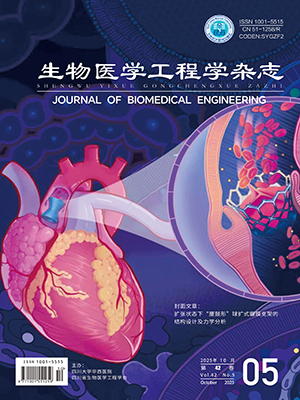| 1. |
ZHANG A, SUN H, WANG X. Power of metabolomics in biomarker discovery and mining mechanisms of obesity[J]. Obes Rev, 2013,14(4):344-349.
|
| 2. |
楊永青, 楊明慶. 肥胖誘發胰島素抵抗的炎性機制[J]. 中國生物化學與分子生物學報,2012,28(8): 692-699.
|
| 3. |
YUAN H X, XIONG Y, GUAN K L. Nutrient sensing, metabolism, and cell growth control[J]. Mol Cell,2013, 49(3): 379-387.
|
| 4. |
UM S H, FRIGERIO F, WATANABE M, et al. Absence of S6K1 protects against age- and diet-induced obesity while enhancing insulin sensitivity[J]. Nature, 2004, 431(7007): 200-205.
|
| 5. |
FENTONA T R, GOUTB I T. Functions and regulation of the 70 kDa ribosomal S6 kinases[J]. Int J Biochem Cell Biol, 2011,43(1): 47-59.
|
| 6. |
SUNAMI T, BYRNE N, DIEHL R E, et al. Structural basis of human p70 ribosomal S6 kinase-1 regulation by activation loop phosphorylation[J]. J Biol Chem, 2010, 285(7): 4587-4594.
|
| 7. |
UM S H, D'ALESSIO D , THOMAS G. Nutrient overload, insulin resistance, and ribosomal protein S6 kinase 1, S6K1[J]. Cell Metab, 2006, 3(6): 393-402.
|
| 8. |
MAGNUSON B, EKIM B, FINGAR D C. Regulation and function of ribosomal protein S6 kinase (S6K) within mTOR signalling networks[J]. Biochem J, 2012, 441(1): 1-21.
|
| 9. |
CORNU M, ALBERT V, HALL M N. mTOR in aging, metabolism, and cancer[J]. Curr Opin Genet Dev, 2013, 23(1):53-62.
|
| 10. |
MANNING B D. Insulin signaling: inositol phosphates get into the akt[J]. Cell, 2010, 143(6): 861-863.
|
| 11. |
EFEYAN A, SABATI D M. mTOR and cancer: many loops in one pathway[J]. Curr Opin Cell Biol, 2010, 22(2):169-176.
|
| 12. |
HAMILTON D L, PHILP A, MACKENZIE M G, et al. Prolonged activation of S6K1 does not suppress IRS or PI-3 kinase signaling during muscle cell differentiation[J]. BMC Cell Biol, 2010, 11: 37.
|
| 13. |
ROBERTO Z, LIRON B P, ALEJO E. mTORC1 senses lysosomal amino acids through an inside-out mechanism that requires the vacuolar H+-ATPase[J]. Science, 2011, 334(6056): 678-683.
|
| 14. |
QUY P N, KUMA A, PIERRE P, et al. Poteasome-dependent activation of mammalian target of rapamycin complex 1(mTORC1) is essential for autophagy suppression and muscle remodeling following denervation[J]. J Biol Chem, 2013, 288(2): 1125-1134.
|
| 15. |
SELMAN C, TULLET J M , WIESER D, et al. Ribosomal protein S6 kinase 1 signaling regulates mammalian life span[J]. Scences, 2009, 326(5949): 140-144.
|
| 16. |
OLDHAM S. Obesity and nutrient sensing TOR pathway in flies and vertebrates: Functional conservation of genetic mechanisms[J]. Trends Endocrinol Metab, 2011, 22(2): 45-52.
|
| 17. |
MANDAVIA C H, PULAKAT L, DEMARCO V, et al. Over-nutrition and metabolic cardiomyopathy[J]. Metabolism, 2012, 61(9):1205-1210.
|
| 18. |
張穎,郝進. mTORComplex1/S6K1信號通路在2型糖尿病發生發展中的作用[J]. 重慶醫學, 2012, 31(41):3333-3335.
|
| 19. |
劉效磊,牛燕媚,傅力. mTOR/S6K1信號通路研究進展[J]. 中國運動醫學雜志, 2010, 29(1):118-121.
|
| 20. |
PULAKAT L, DEMARCO V G, ARDHANARI S, et al. Adaptive mechanisms to compensate for overnutrition-induced cardiovascular abnormalities[J]. Am J Physiol Regul Integr Comp Physiol, 2011, 301(4):R885-R895.
|
| 21. |
SOWERS J R, WHALEY-CONNELL A, HAYDEN M R. The role of overweight and obesity in the cardiorenal syndrome[J]. Cardiorenal Med, 2011, 1(1): 5-12.
|
| 22. |
BOSE S K, SHRIVASTAVA S, MEYER K, et al. Hepatitis C virus activates the mTOR/S6K1 signaling pathway in inhibiting IRS-1 function for insulin resistance[J]. J Virol, 2012, 86(11):6315-6322.
|
| 23. |
VEILLEUX A, HOUDE V P, BELLMANN K, et al. Chronic inhibition of the mTORC1/S6K1 pathway increases insulin-induced PI3K activity but inhibits Akt2 and glucose transport stimulation in 3T3-L1 adipocytes[J]. Mol Endocrinol, 2010, 24(4):766-778.
|
| 24. |
MORENO-NAVARRETE J M, ORTEGA F, SáNCHEZ-GARRIDOB M, et al. Phosphorylated S6K1(Thr389) is a molecular adipose tissue marker of altered glucose tolerance[J]. J Nutr Biochem, 2013, 24(1): 32-38.
|
| 25. |
BEDFORD D C. S6K1: reducing the Risks of aging[J]. Dis Model Mech, 2010, 3(3-4): 123-124.
|
| 26. |
BEN-HUR V, DENICHENKO P, SIEGFRIED Z, et al. S6K1 alternative splicing modulates its oncogenic activity and regulates mTORC1[J]. Cell Reports, 2013,3(1):103-115.
|
| 27. |
PéREZ-TENORIO G, KARLSSON E, WALTERSSON M A, et al. Clinical potential of the mTOR targets S6K1 and S6K2 in breast cancer[J]. Breast Cancer Res Treat, 2011, 128(3): 713-723.
|
| 28. |
HOLZ M K. The role of S6K1 in ER-positive breast cancer[J]. Cell Cycle, 2012, 11(17): 3159-3165.
|
| 29. |
MARUANI D M, SPIEGE T N, HARRIS E N, et al. Estrogenic regulation of S6K1 expression creates a positive regulatory loop in control of breast cancer cell proliferation[J]. Oncogene, 2012, 31(49): 5073-5080.
|
| 30. |
ISMAIL H M. Overexpression of s6 kinase 1 in brain tumours is associated with induction of hypoxia-responsive genes and predicts patients' survival[J]. J Oncol, 2012.
|
| 31. |
BANDARAGE U, HARE B, PARSONS J, et al. 4-(Benzimidazol-2-yl)-1,2,5-oxadiazol-3-ylamine derivatives: potent and selective p70S6 kinase inhibitors[J]. Bioorg Med Chem Lett, 2009, 19(17): 5191-5194.
|
| 32. |
YE P, KUHN C, JUAN M, et al. Potent and selective thiophene urea-templated inhibitors of S6K[J]. Bioorg Med Chem Lett, 2011, 21(2): 849-852.
|
| 33. |
BUSSENIUS J, ANAND N K, BLAZEY C M, et al. Design and evaluation of a series of pyrazolopyrimidines as p70S6K inhibitors[J]. Bioorg Med Chem Lett, 2012, 22(6): 2283-2286.
|
| 34. |
LEE W H, KIM Y W, CHOI J H, et al. Oltipraz and dithiolethione congeners inhibit hypoxia-inducible factor-1α activity through p70 ribosomal S6 kinase-1 inhibition and H2O2-scavenging effect[J]. Mol Cancer Ther, 2009, 8(10): 2791-2802.
|




